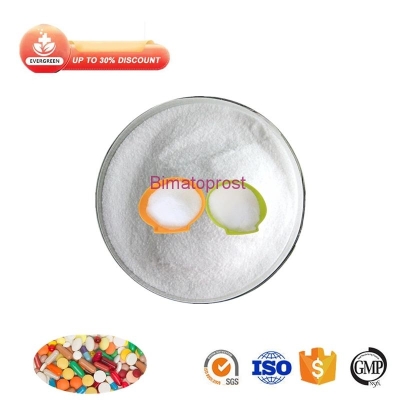-
Categories
-
Pharmaceutical Intermediates
-
Active Pharmaceutical Ingredients
-
Food Additives
- Industrial Coatings
- Agrochemicals
- Dyes and Pigments
- Surfactant
- Flavors and Fragrances
- Chemical Reagents
- Catalyst and Auxiliary
- Natural Products
- Inorganic Chemistry
-
Organic Chemistry
-
Biochemical Engineering
- Analytical Chemistry
- Cosmetic Ingredient
-
Pharmaceutical Intermediates
Promotion
ECHEMI Mall
Wholesale
Weekly Price
Exhibition
News
-
Trade Service
In order to better standardize the management of the initial adjustment period of basal insulin in China and further improve the blood glucose control of T2DM patients receiving insulin therapy, clinical experts in the field of endocrine and metabolic diseases in China jointly formulated the "Adult Type 2 Diabetes" based on evidence-based medicine.
Expert guidance on the initial adjustment period of basal insulin (hereinafter referred to as the "recommendation") for the reference of the majority of clinicians, was recently published in the "Chinese Journal of Diabetes"
.
(The download link is attached at the end of the article) What is the "initial adjustment period"? The initial insulin dose adjustment period is 8 to 12 weeks after the initiation of insulin treatment.
It is the period during which most insulin hypoglycemic clinical studies aim to achieve the goal of blood glucose control and actively adjust the insulin dose
.
Pay attention to the correct use of drugs in the initial dose adjustment period: The initial dose adjustment period is a critical period for the success of long-term insulin therapy, which can affect the long-term treatment outcome and is also an important period for observing the safety of insulin therapy
.
Recommendations for starting dose, dose adjustment and blood glucose monitoring: General population 1.
Basal insulin plan ➤ Starting dose: The starting dose of basal insulin can be calculated based on body weight, usually 0.
1~0.
3 U/(kg·d)
.
For HbA1c>8.
0%, it can be considered to start with 0.
2~0.
3U/(kg·d)
.
When starting insulin glargine U100 therapy for patients with BMI ≥ 25kg/m^2, 0.
3 U/(kg·d) can be considered as the starting point
.
The initial dose of insulin degludec is usually 10 U/d
.
➤Dose adjustment: When the basal insulin dose does not reach 0.
5 to 0.
6 U/(kg·d) in most patients, if the FPG does not meet the standard and there is no significant hypoglycemia, you can continue to adjust the basal insulin dose to optimize blood glucose without changing the treatment plan
.
Before reaching the set blood glucose target value, it is recommended that the patient, under the guidance of the doctor, adjust 2~6U per week according to the FPG until the FPG reaches the target
.
For patients who have the ability to monitor blood glucose, sense hypoglycemia, and have self-management capabilities, doctors can guide them to perform simple self-insulin dosage adjustments, adjusting 2U every 3 days until the FPG reaches the standard
.
For insulin glargine, patients can also use a simple method of adjusting 1U per day until the FPG reaches the standard for self-insulin dose adjustment
.
Insulin degludec is usually adjusted once a week
.
➤Glucose monitoring: Those who use insulin therapy can monitor blood glucose according to the insulin treatment plan to maintain blood glucose within the target range
.
Patients using basal insulin should monitor FPG and adjust the dose of basal insulin before bedtime according to FPG
.
2.
Basic-meal insulin regimen.
Basic insulin combined with oral hypoglycemic drugs and/or glucagon-like peptide 1 receptor agonist.
After 3 months of standard treatment, patients whose FPG has reached the standard but HbA1c has not yet reached the standard can be treated at On the basis of basal insulin therapy, add 4~6U of meal insulin before the main meal/breakfast
.
According to the blood glucose level before the next meal, the meal insulin is adjusted 1 to 2 times a week
.
Adjust 1~2U or 10%~15% each time until the pre-meal blood sugar of the next meal reaches the standard
.
Afterwards, it can be gradually increased to 2~3 times/d prandial insulin therapy according to the needs of blood sugar control
.
When basal insulin is combined with other hypoglycemic drugs, the risk of hypoglycemia can be further increased.
It is necessary to monitor blood glucose and adjust the insulin dose in time
.
When using a needle-free syringe to inject insulin, care should be taken to reduce the insulin dose appropriately
.
Insulin initiation and volume adjustment: Special population 1.
Elderly diabetic patients and elderly T2DM patients on the basis of life>
.
Before initiating insulin therapy for elderly diabetic patients, it is necessary to consider the patient's overall health, the characteristics of elevated blood glucose, and the risk of hypoglycemia, and individualized treatment options should be selected
.
Basal insulin is convenient and highly compliant, and is suitable for most elderly patients.
Therefore, basal insulin is the first choice when starting insulin therapy, and preparations with less risk of hypoglycemia, such as insulin glargine U100, insulin glargine U300, insulin degludec, etc.
.
2.
Diabetes and vital organ damage ➤ Chronic kidney disease (CKD) population: When the renal function is significantly reduced, the use of OADs is restricted, and the blood sugar control is poor, it is recommended to start insulin therapy as soon as possible
.
For CKD patients, try to choose insulin analogs that have low risk of hypoglycemia and are conducive to patient self-management
.
Patients with renal insufficiency should start with a small dose and increase the dose to avoid hypoglycemia
.
➤Patients with diabetes and liver dysfunction: T2DM patients with severe liver dysfunction may consider insulin therapy
.
Patients with liver dysfunction may need less insulin due to decreased glucose-negative capacity and slower insulin metabolism
.
Download link: http://guide.
medlive.
cn/guideline/24349 The above content is extracted from: Expert guidance on the initial adjustment period of basal insulin in adults with type 2 diabetes[J].
Chinese Journal of Diabetes, 2021, 29(10): 721 -726.







